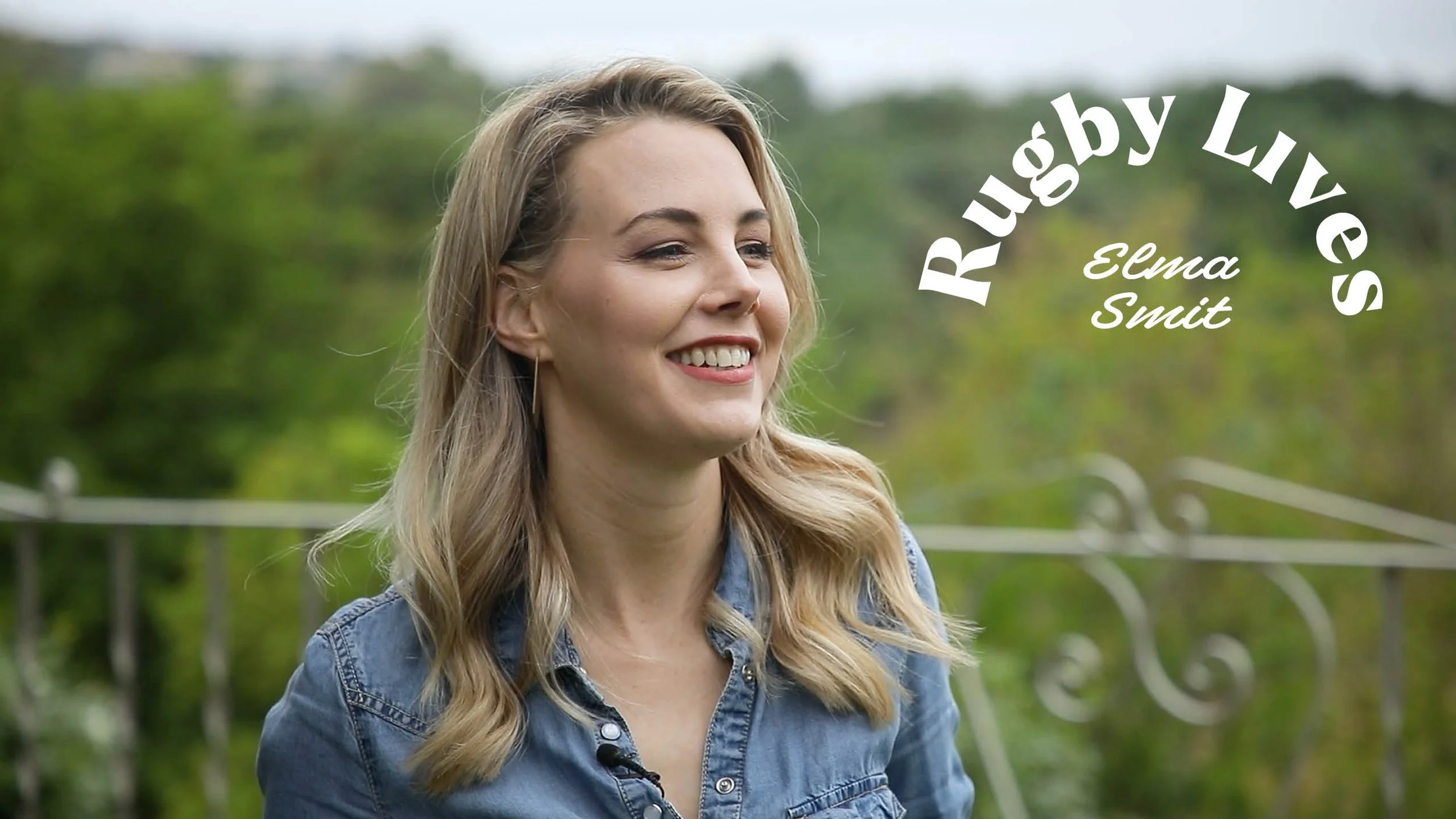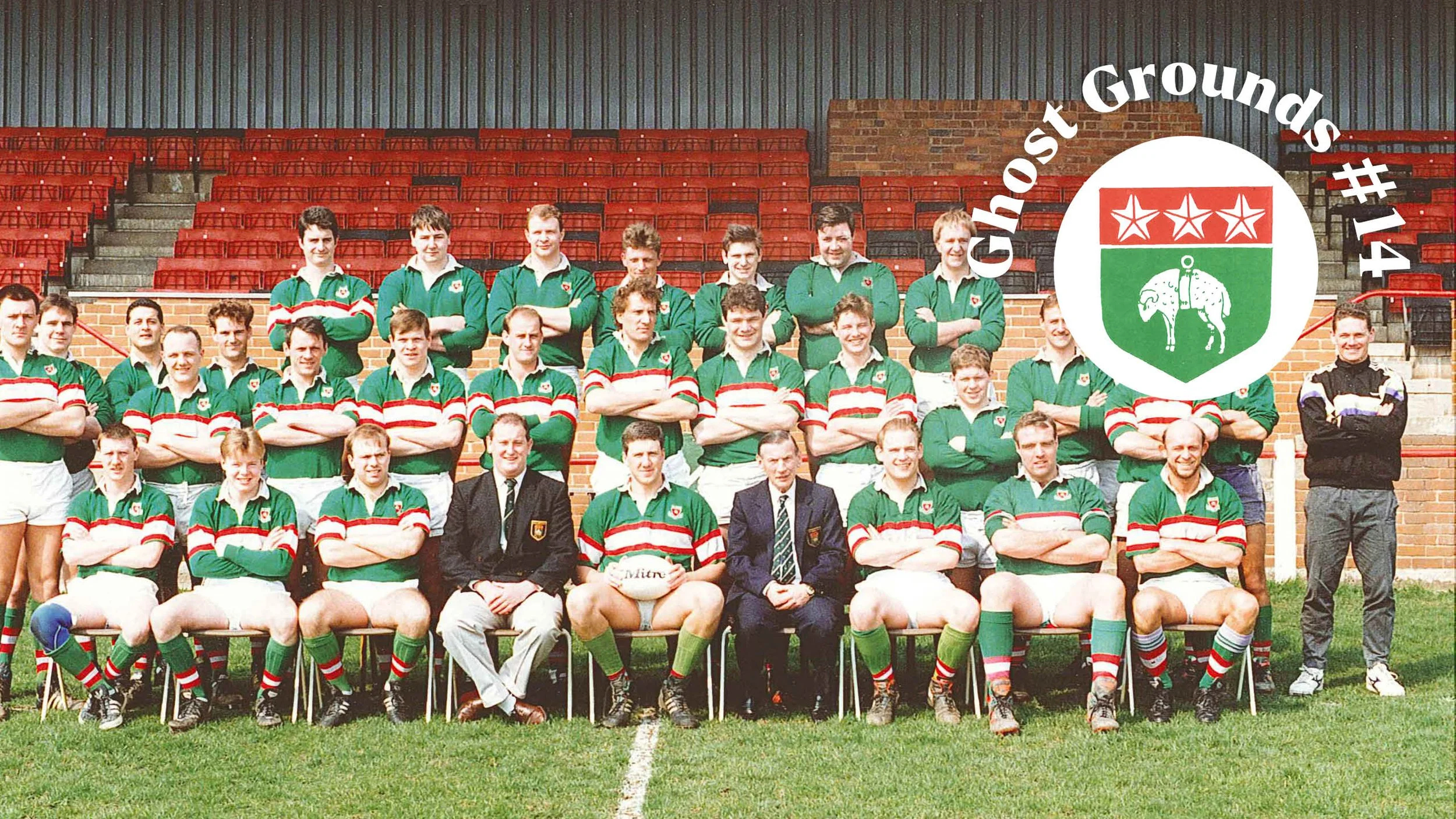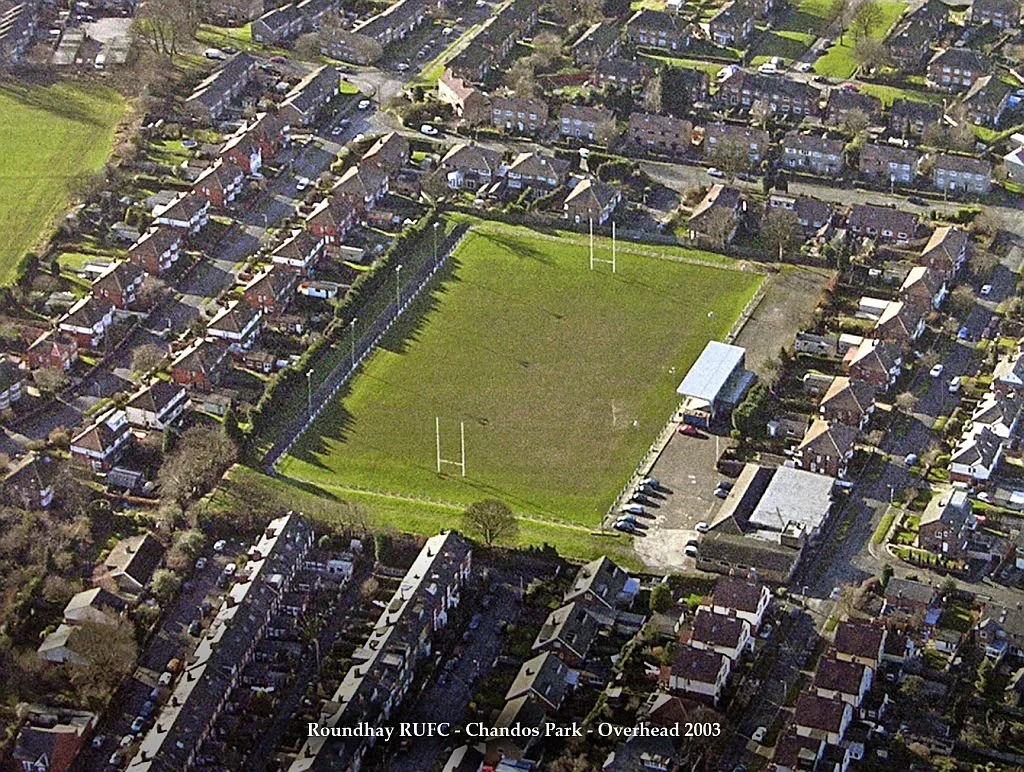
Rugby Lives Elma Smit
Chandos Park
LANX Giveaway
Penryn
Lawrence Dallaglio
Her journey began on ‘X-Factor for rugby presenters’. She soon became the first female face of the sport on South African television. She's gone on to cover three world cups and now hosts one of the biggest podcasts in the women’s game. This is Elma Smit’s rugby life.
There’s a South African schools’ game that attracts 50,000 people. It’s played between Paarl Boys High and Paarl Gymnasium, which was my school. Rugby was literally the way we socialised. I remember the score between the two teams in my final years, we won 13-3.
I grew up in an environment where rugby was part and parcel of your education. Paarl is a small town in the winelands, just outside of Cape Town. I went to the same school as Schalk Burger and John De Villiers and more recent Springboks that went there would be Andre Pollard, Wilco Louw. But it never occurred to me at that age that women could also play the sport.
I was involved with all things at school, but I was never an exceptional athlete. Girls played netball and hockey, but I was very bad. I was the girl who did the debates or hosted exchange students, organised the functions and wrote for the school newspaper.
I was always a broadcaster. I started working at the little radio station in my hometown, which was called ‘Radio KC 108.8 FM – the sound that sets you free’. Then I went on to study law at Stellenbosch, another big place for rugby - Schalk had a cricket bursary there before he started playing professionally.
My first language is Afrikaans, I couldn’t speak English until I was nineteen. So, I hosted my radio show in Afrikaans, got my entire degree in Afrikaans. Then I landed a music TV show for a local version of MTV where I interviewed South African bands and hosted a festival called Kopi, which is like the South African version of Glastonbury.
Before the Rugby World Cup in 2011 no women had ever reported on rugby in South Africa. We did have a women’s team but at that stage they were completely amateur, so they couldn’t do what they usually do with men’s rugby, where Victor Matfield retires, becomes a pundit, the analysts can ask him for his expert opinion. Because no one knew who the women’s players were, they were never reported on, or seen or TV.
SuperSport did a talent search for a female anchor – it was like X-Factor for rugby presenters, the show was called Lady Rugger. We were filming in the same studio complex as SuperSport, and I was in the canteen one day chatting to one of the producers, and they asked if I would come audition. I think they had realised because the show was due to finish in July and the winner needed to be in New Zealand by September, they needed people with experience in the mix.
In the audition I had to pretend a swarm of bees had attacked the pitch and do a live telling them what I could see. I went on to win but then there was this big media storm because a lot of people were saying it was ridiculous, and, ‘why can’t they just hire a woman that is good at this?’ But it was great entertainment, it became the talk of the town. I got a sponsored car, then went to New Zealand and covered the tournament.
When I came back, I ended up being touchscreen girl by default. The producers didn’t know what to do with me as they had these very senior men hosting all these shows and there I was, this 26-year-old girl with World Cup experience.
I came to England in 2015 to cover the World Cup and I saw all these very prominent women working as rugby reporters. It felt like the future. That tournament was mind blowing for me in so many ways. This whole world of women participating in the conversation was very real. I went on to do Japan in 2019 and by then I had started to work directly for international governing bodies and clients all over the place, not just SuperSport. That was a career highlight for me, being in Japan. We delivered so much content, the pace was unreal.
In 2019, I did the Cricket World Cup and Rugby World Cup in the same year. It was an interesting comparative experience because from an operational perspective, the two couldn’t be more different. I worked for the ICC from May until July and then for World Rugby from September until November. The next year, I hosted a figure skating show which was interesting because I didn’t get to stray beyond ball sports often. It is a phenomenally brave and technical sport that has this beautiful artistic side to it.
One of my funniest moments ended up as a viral video. I was doing fan interviews at a Super Rugby doubleheader in January 2020, the Stormers were playing the Bulls. I went to a Stormers fan to ask what he thought was going to happen, thinking he’s going to tell me a story how they’re going to win. He just went, ‘we’re going to f*ck them up!’ I turned to the camera with this joking look on my face and said, ‘Okay, back to the studio’. I didn’t think the footage was going anywhere, but literally seconds later my phone started blowing up with messages saying, ‘Oh my god, how funny is that? I can’t believe that just happened live!
During lockdown, I started doing podcasts from home. I basically had video calls like this with Jake White and Werner Kok. Then I did the World 10s series in Bermuda with Alex Payne. Shortly after that, he reached out and said, ‘we think we have a format that would work and would be sponsored, we’ve got Emily Scarratt keen – would you want to be the host of this?’.
The opportunity to work with Scaz and Mike Tindall was absolutely nuts, I couldn’t believe my luck. We did our first episode, and it went out on International Women’s Day in 2021. At this stage, we were thinking about moving to the UK already, and that became a case of when, not if. It was a fun, simple way for me to start making more UK focussed content, even while I was still living in South Africa.
The most interesting person I’ve interviewed has to be Siya Kolisi. I’ve spoken with him a few times over the years, and he has an innate humility and authenticity. He gets through to people’s hearts so effortlessly. It’s something I marvel at, I’m genuinely fascinated with how he does it. When we look back on his journey in fifty years, him being a world class rugby player is going to be the least remarkable thing about him.
I’ve also worked closely with Rassie [Erasmus] over the years, he’s not a difficult interview. He knows exactly what he wants to say when he’s in front of a microphone, he’s an astute strategist. Obviously, it’s the job of the interviewer to get great content out of someone. His character can either make that relatively easy, or twice as hard.
I’m busy making rugby content on a day-to-day basis. I get to make a brilliantly fun podcast with Scaz and Mo – I’m living the dream.
By Tyrone Bulger
WIN a pair of LANX handmade shoes
The Lancashire-based company proudly partnered with Leicester Tigers are giving away one pair of their boots, brogues, or trainers. They work with independent shoemakers to produce sturdy and elegant shoes perfect for working hard, playing hard and looking good.
To enter, visit our competition posts on Twitter, Facebook, Instagram.
Chandos Park, Leeds, Roundhay RFC, 1932-2007.
When it comes to rugby, the north of the country is probably best known for the Super League teams that reside there, the likes of Castleford, Hull, and Wakefield all a permanent fixture in the top flights of rugby league. Union has long been regarded as a ‘minority’ sport in the region since the division of the two codifications in 1895, but there was once a time when Roundhay RUFC, the minnows of Yorkshire, produced international players and competed with some of the very best from their little old home at Chandos Park.
Roundhay officially formed in April 1924 after a meeting was held at the Mansion Hotel, a regal establishment situated in the middle of Roundhay Park. The club’s first secretary was a man named Eric Bleakley, who is credited as being one of the main driving forces behind the formation of the side, organising fixtures for the initial five years of its existence. In their first season, they rented a field at Talbot Road for £8, half a mile from their eventual home. Regular fixtures were against the likes of Bradford D, Ilkley C and Headingly B.
The first eight years of existence were nomadic as the club made two moves before settling at the small, suburban ground of Chandos Park in 1932, off the back of a season in which they won 28 of 35 fixtures and scored more than 700 points. The grounds were purchased by the President at the time, one Stanley Wilson. The focus was on becoming a stable club with a reputation for attractive rugby. Despite the challenge posed by the Second World War, to which half of the club’s members were called up, Roundhay RUFC continued in its endeavour to compete as one of the best in the county.
By the end of the war, the debts to Mr Wilson had been repaid, and the ground had a small, wooden stand and basic clubhouse. But the premises seemed to be forever in development and before long, the original stand known as the archer’s hut had been replaced by a more permanent, concrete and steel structure.
Along with the facilities at Chandos Park, the profile of the players at the club began to grow. Jack Best became the first Roundhay player to represent Yorkshire and many followed in his footsteps, including Dennis Wilkins, who went on to represent England thirteen times, participating in every Five Nations game between 1951 and 1953. He was known as the Squire and had started playing rugby for the club’s B team.
During the period that Wilkins was a regular fixture for the national team, the standard of the club remained on an upward curve. In the 1950-51 season, they won 27 of 33 matches, and in 1954, reached the Yorkshire Cup final for the first time, although the silverware would allude them for another thirteen years. Throughout the sixties and seventies there were developments both on and off the field. In 1968, six new changing rooms were built, kitted out with plunge baths, showers, and a physio room. A kitchen and tearoom were built as extensions to the clubhouse.
Bev Dovey, a man who had propped for England against Ireland and Wales, made his way back to Leeds after a series of moves around the country and became the club captain in 1973. It was under his guidance that they went on to win the County cup for the first time, narrowly beating Headingly 20 points to 16. Despite the elation of this win, it would take them another five years to regain the trophy.
In 1981, Chandos Park welcomed possibly the largest attendance it had seen in its history, when Roundhay came up against the might of Leicester in the third round of the John Player Cup. There were more than 3,000 in attendance as they packed in to watch the likes of Clive Woodward and Dusty Hare in action against the home side. Unfortunately, the Tigers were too strong for Roundhay on the day, beating them 34 points to 3, and going on to win the cup that year.
In 1985, Brian Moore was invited to play for Roundhay by the club captain at the time and England centre, Richard Cardus. Although Roundhay were the less fashionable of the Leeds clubs at the time, Moore was thrilled and accepted the invite, leaving behind his Crossleyans, to move up the rugby ladder, which he did, going on to win 64 caps for England and five for the British Lions. Two years later, another significant player to grace the Chandos Park turf moved to the club from Crossleyans: Jim Mallinder spent two seasons at Roundhay, before moving on to Sale Sharks.
Following the introduction of competitive leagues in 1987, Roundhay gained a single promotion, during the 1988-89 season. They finished 3rd in National League 4 North, but a draw against Lichfield at the end of the season threatened to derail their hopes for promotion, but their rivals, Broughton Park, lost that day and so Roundhay made their way into National 3.
They remained at that level for four years, during which the likes of Exeter, Richmond, and London Scottish all had to venture north to play at Chandos Park. But in 1992, Roundhay RUFC amalgamated with Headingly to form Leeds RUFC. The final game in Rondhay’s existence was played against Richmond on the 11th of April that year. The team finished that season with only eight points under their belt but were proud to have made it to that standard in the first place.
Chandos Park became the property of Leeds RUFC, who used the ground for friendly matches while playing their competitive fixtures at Kirkstall until 1996, when they moved to Headingly Stadium to share the ground with Leeds Rhinos. In 1998, the club joined forces with the rugby league outfit to form Leeds Rugby Limited, the world’s first dual code partnership. It was at this point that the team were renamed Leeds Tykes for the start of the season that year.
Following the sale of Kirkstall, Chandos Park was used for all non 1st xv games as well as training facilities for the whole of Leeds Tykes. Until April 2007, the ground hosted many a quality game played by the Leeds Tykes Academy, under 21s and ‘A’ teams who would regularly play national opposition.
The grounds were demolished to make way for a new housing estate, and the remnants now sit beneath the residential streets somewhere between Chandos Avenue and Chandos Gardens. However, the spirit of Roundhay lives on in the memories of everyone who was involved in the club, which will forever be recognised as one of the cornerstones of Leeds Tykes.
By Tyrone Bulger











